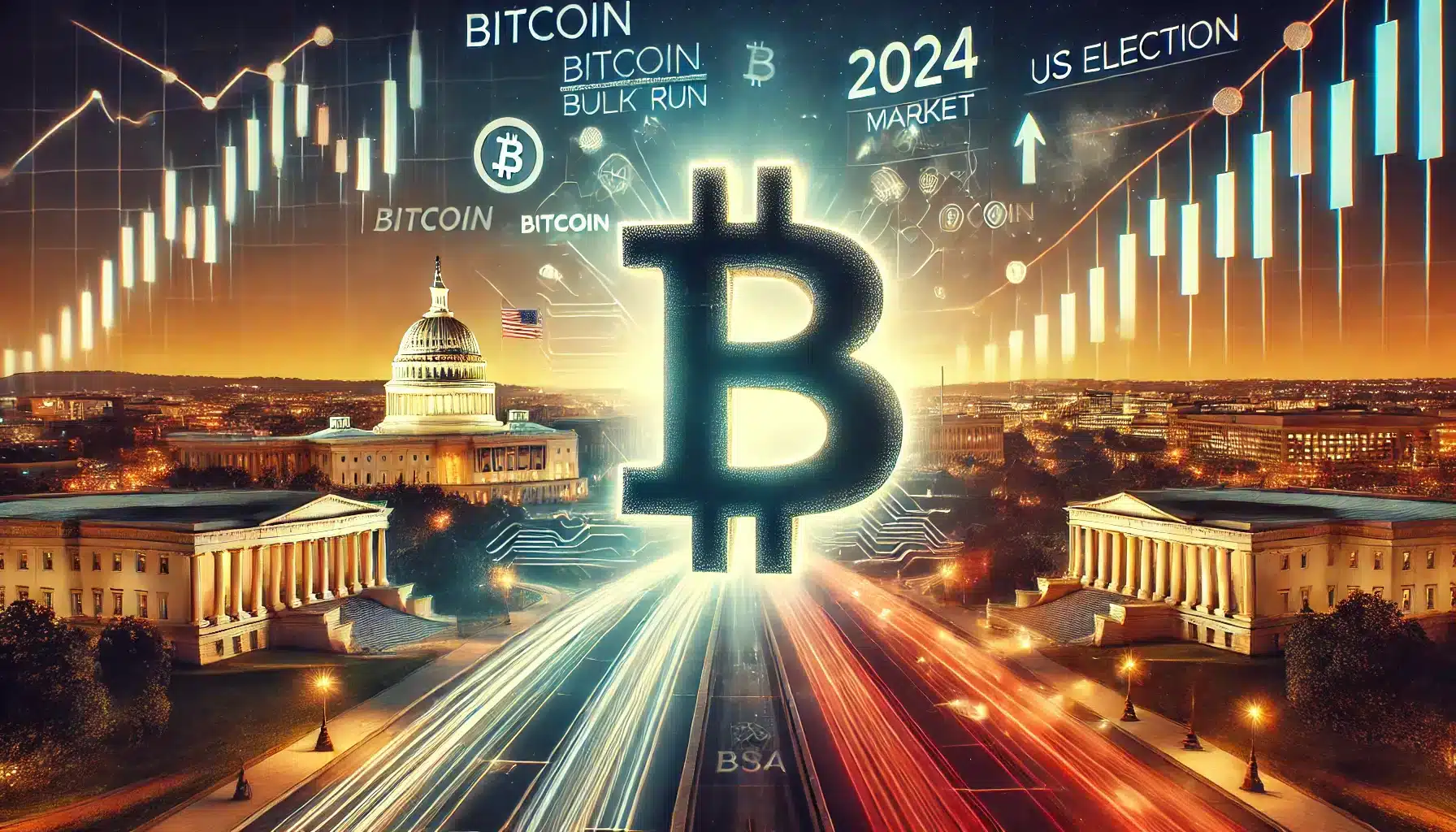Recently, Matthew Sigel, who is the head of digital assets research at VanEck, gave his insights regarding the possible future trends in Bitcoin’s evolution, particularly with regard to the 2024 U.S. presidential elections. Sigel examined the position of Bitcoin not only as a speculative asset but also as something that might be a lot bigger in the global financial system in the coming years.
Sigel noted how the current geopolitics may create the right environment for Bitcoin’s next major rally. He even stressed the huge backing that ex-president Donald Trump has been receiving could be a good case for the Bitcoin price rise pattern. He sees Trump as the pro-cryptocurrency candidate and contrasts him with Kamala Harris, the current Vice President who has not espoused cryptocurrency openly. That divide, said Sigel, might drive some investors who focus on attitudes that call for ownership of digital assets and financial systems that are not centralized.

Looking back at the 2020 presidential election, Sigel indicated that the price of Bitcoin was quite stable well ahead of the election but surged immediately afterwards. He perceives a similar scenario for the year 2024 and hence describes the elections as a good move for the ‘Bitcoin Bull Run’ that is about to take place. He pointed out that there is a tendency in which huge political activities tend to bring renewed attention and capital infusion in cryptocurrency.
Bitcoin’s Correlation with Economic Shifts and Dollar Movements
Sigel also proceeded to correlate the performance of Bitcoin with respect to various economic changes. He also mentioned that, over the years, the price of Bitcoin has moved against the United States dollar; that is, it increases when there is a decline in the dollar. Furthermore, he also noted the increasing rise of the price of Bitcoin as the M2 money supply grows. Since all central banks around the world have been raising their balance sheets and pumping money into the system, Sigel feels that the price of Bitcoin has the potential to go up as well.
If, after the elections, the U.S. were to experience a bout of economic instability, which is characterized by something like the downgrade of its sovereign debt rating by Moody’s, then Bitcoin prices would surge once more. Sigel said this is possible due to changes in the economic environment that tend to affect investors’ psychology and, subsequently, the cryptocurrency market.
Long-Term Bitcoin Price Projections: Could It Reach $3 Million?

Taking into consideration the events beyond 2024, Sigel put forth rather aggressive price ambitions pertaining to the growth of Bitcoin in the long run. Given the patterns observed in the past and the fact that after post-event happenings, Bitcoin has mostly hiked in price, he was of the opinion that the digital currency could hit $180,000 Post-Election. In providing a real long-term view, Sigel suggested that if the central banks start considering Bitcoin as a reserved asset and reserve 2% of it under them, it may one day rise to 3 million dollars.
Sigel does not consider those projections as exaggerated. For instance, Bitcoin’s CAGR has been around 16%. Historical cycle rallies of Bitcoin have been up to 2000%. “Even if we manage half of what is already historical growth, we’ll be looking at a 1000% growth — we think this bitcoin price has such potential if the growth continues in a similar trajectory,” he said and explained why he thinks bitcoin is going to grow.
Furthermore, Sigel laid out the growing importance of Bitcoin in developing countries. He acknowledged the recent actions of the BRICS countries, Brazil, Russia, India, China, and South Africa, to widen their association. Currently, the combined economies of these nations are more than that of the so-called G7 countries, suggesting a possible movement from the US-centric dominated financial systems. Sigel stated that these regions might embrace Bitcoin as a digital currency whose value lies outside of the traditional monetary systems, especially in central banks and among institutional investors.
Challenges for Bitcoin as a Central Bank Reserve Asset
Although Sigel painted an optimistic view of the possibility for central banks to hold bitcoin as a reserve asset, he admitted there are several challenges that bitcoin will need to address. Central banks think of reserve assets as those that have high liquidity, stability and security. These are factors very critical and anyone who understands Bitcoin knows that it is very volatile and cannot fit into these factors. A number of institutional investors today still view Bitcoin as a high-risk, high-return investment, which is still far from what central banks usually consider safe.
Matthew Sigel’s analysis is an interesting take on the optimism surrounding the cryptocurrency, Bitcoin, and the issues that it has to deal foe everyday adoption.
Stay connected with TurkishNY Radio by following us on Twitter and LinkedIn, and join our Telegram channel for more news.







